Overview
MATCH is the “Prevent Lows” pillar of Dynamic Glucose Management. The idea: prevent and treat hypos with glucose (not sugar), and match the dose of glucose to your current level and your rate of fall. This matters because over-treating hypos (or using sugar) often creates the same rollercoaster: low → panic eating → rebound high → correction → repeat.
Two reminders to keep your head straight:
- The gut maxes out at about 1 gram of glucose absorbed per minute.
- It takes roughly 20 minutes for a treatment to show up clearly on CGM.
The skill is not perfection. It’s fast feedback: dose, wait, read the curve, then adjust next time.
The detail
Preventing and treating hypos.
Let’s start with a quick refresher on why sugar is a terrible choice for hypo treatment.

Remember the key problem? Half the grams in sugar are fructose, and fructose gets parked in the liver. So only about half your “treatment” actually treats the hypo.
That’s exactly why some people end up needing repeated “treatments” — and then rocket straight back up high.
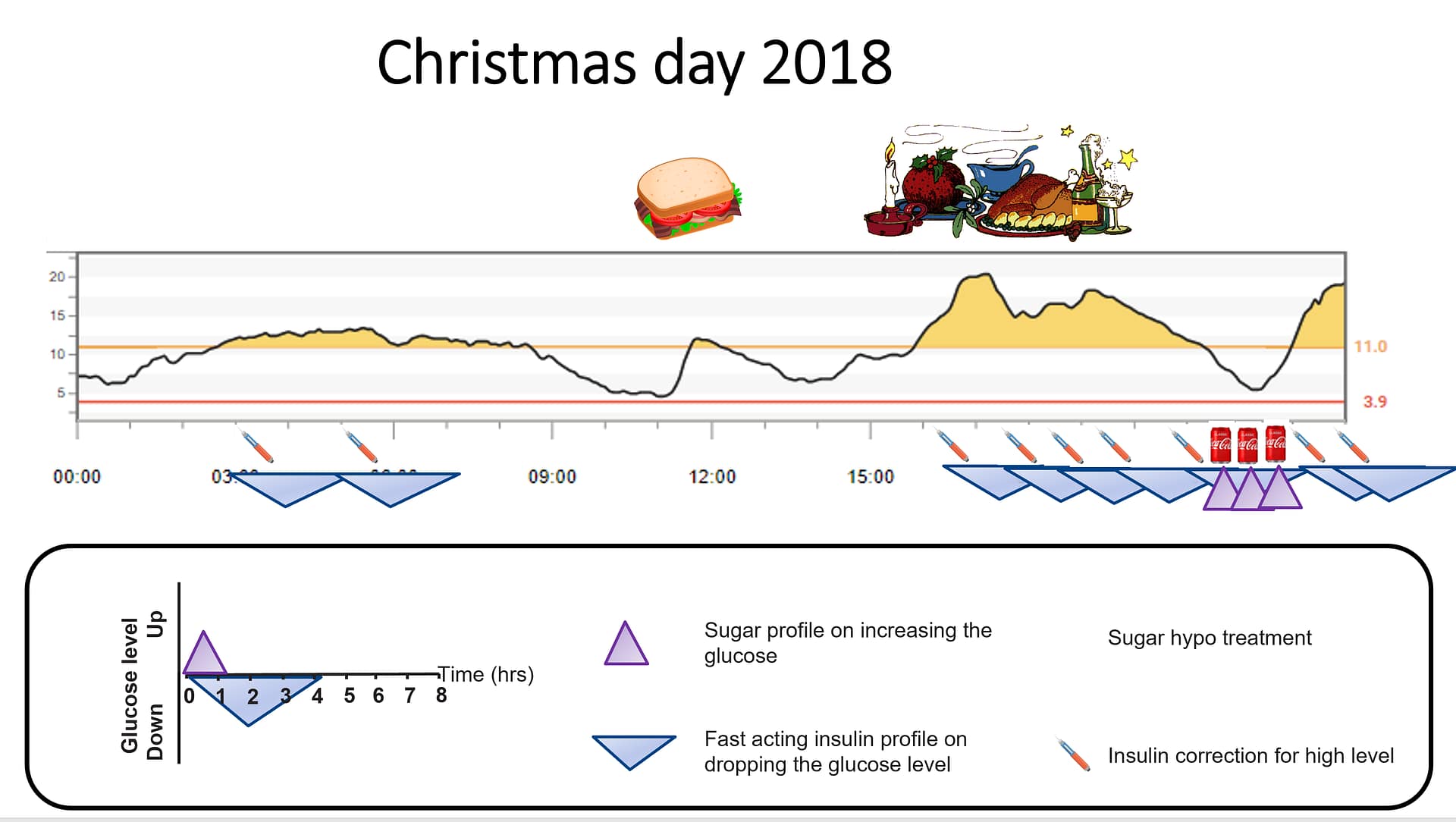
This is the same sugar-rollercoaster many people get stuck on before using Dynamic Glucose Management.
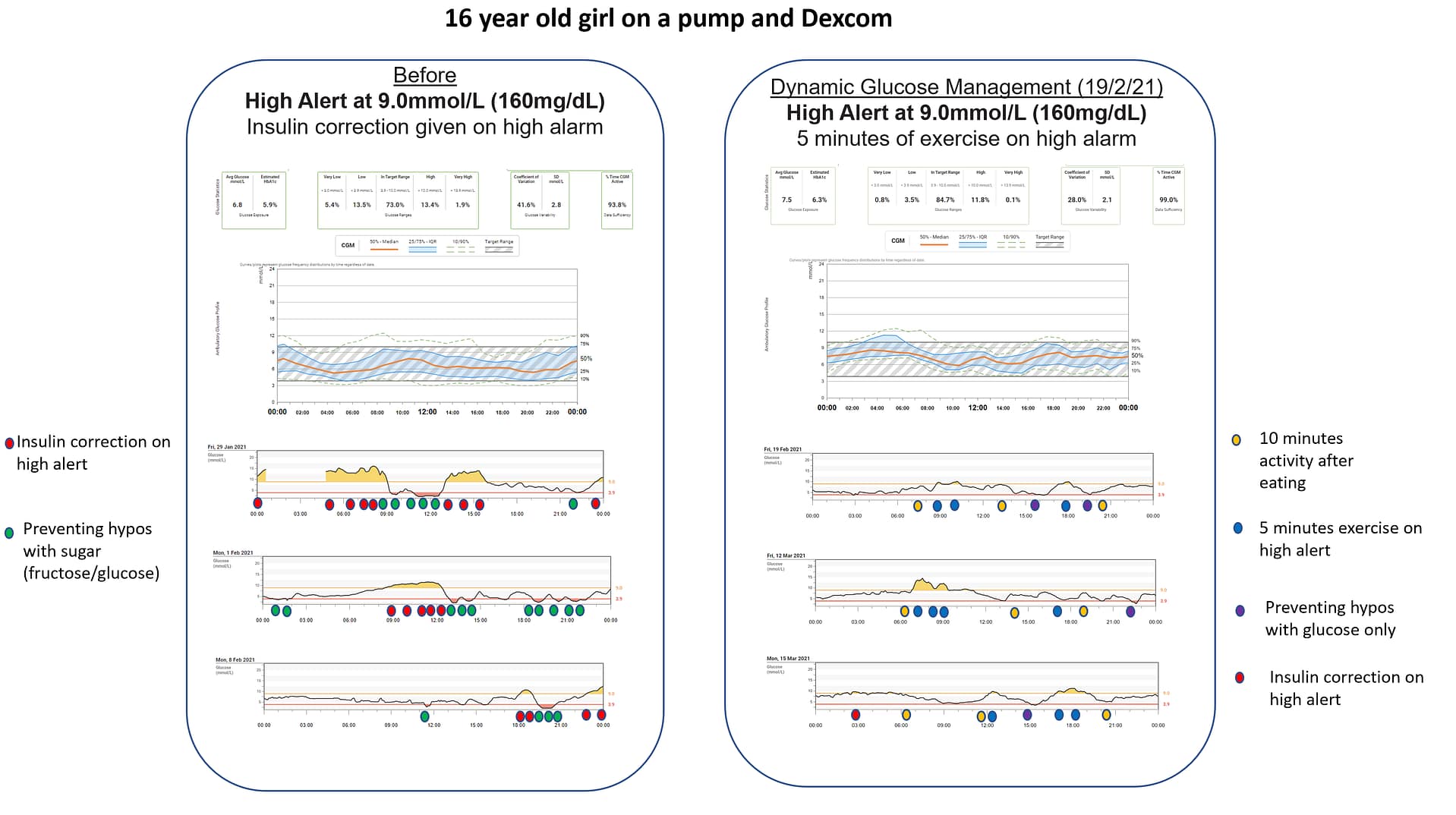
And there’s a second hit: flooding the liver with fructose can flip on the overeating switch — the thing unpacked from Peter Attia’s podcast with Rick Johnson.
Rick Johnson’s revolutionary insights into sugar and obesity
Here’s that mechanism again in one picture:

Sugar creates the perfect storm: slow correction + repeat dosing + liver fructose = rebound highs and hunger chaos.
Now compare that with glucose — the clear winner for both preventing and treating hypos.
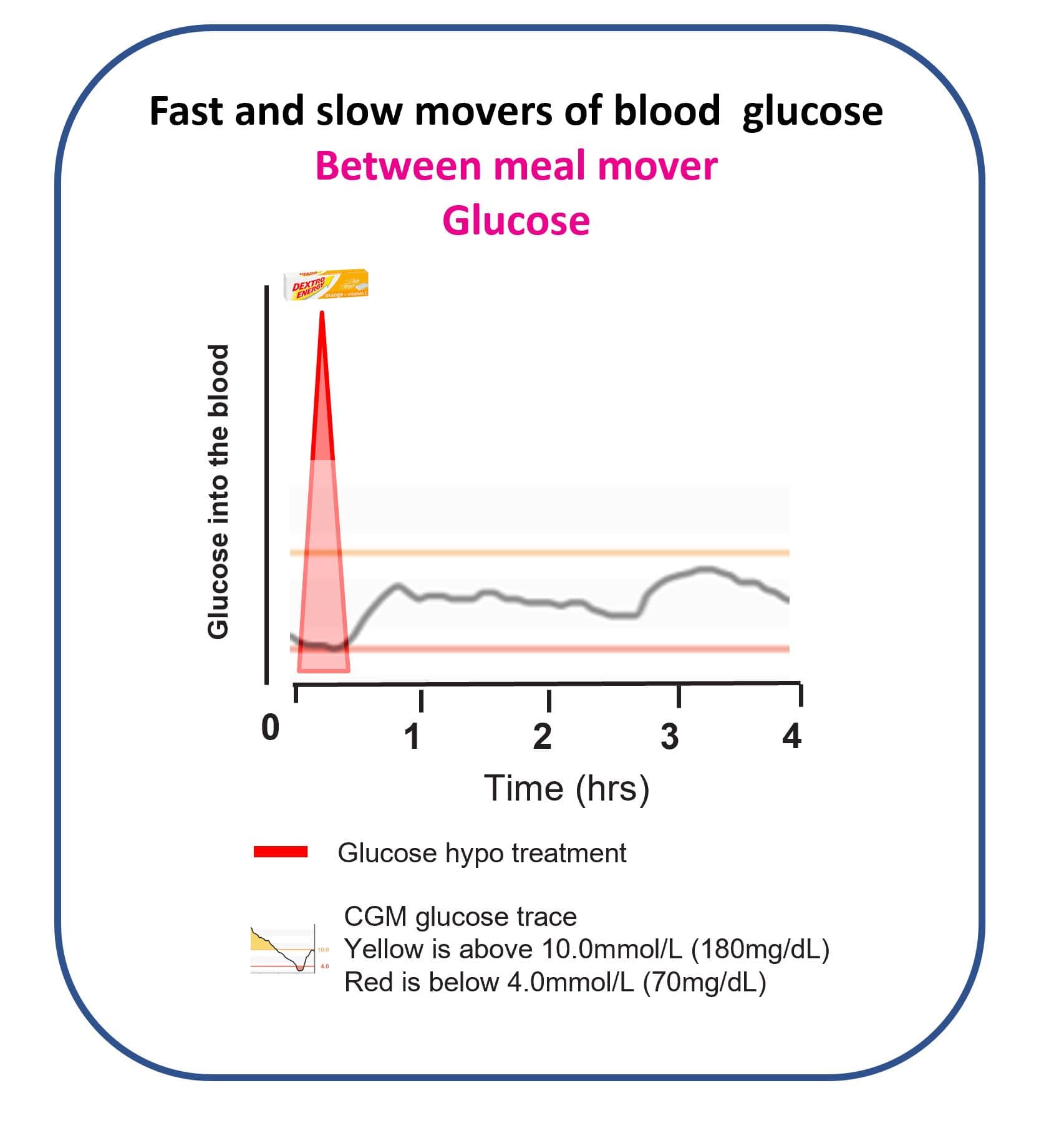
Two reminders to keep your head straight:
- The gut maxes out at about 1 gram of glucose absorbed per minute.
- It takes roughly 20 minutes for a treatment to show up clearly on CGM.

Swapping sugar drinks for dextrose tablets is a big reason why hypo prevention can become smoother.
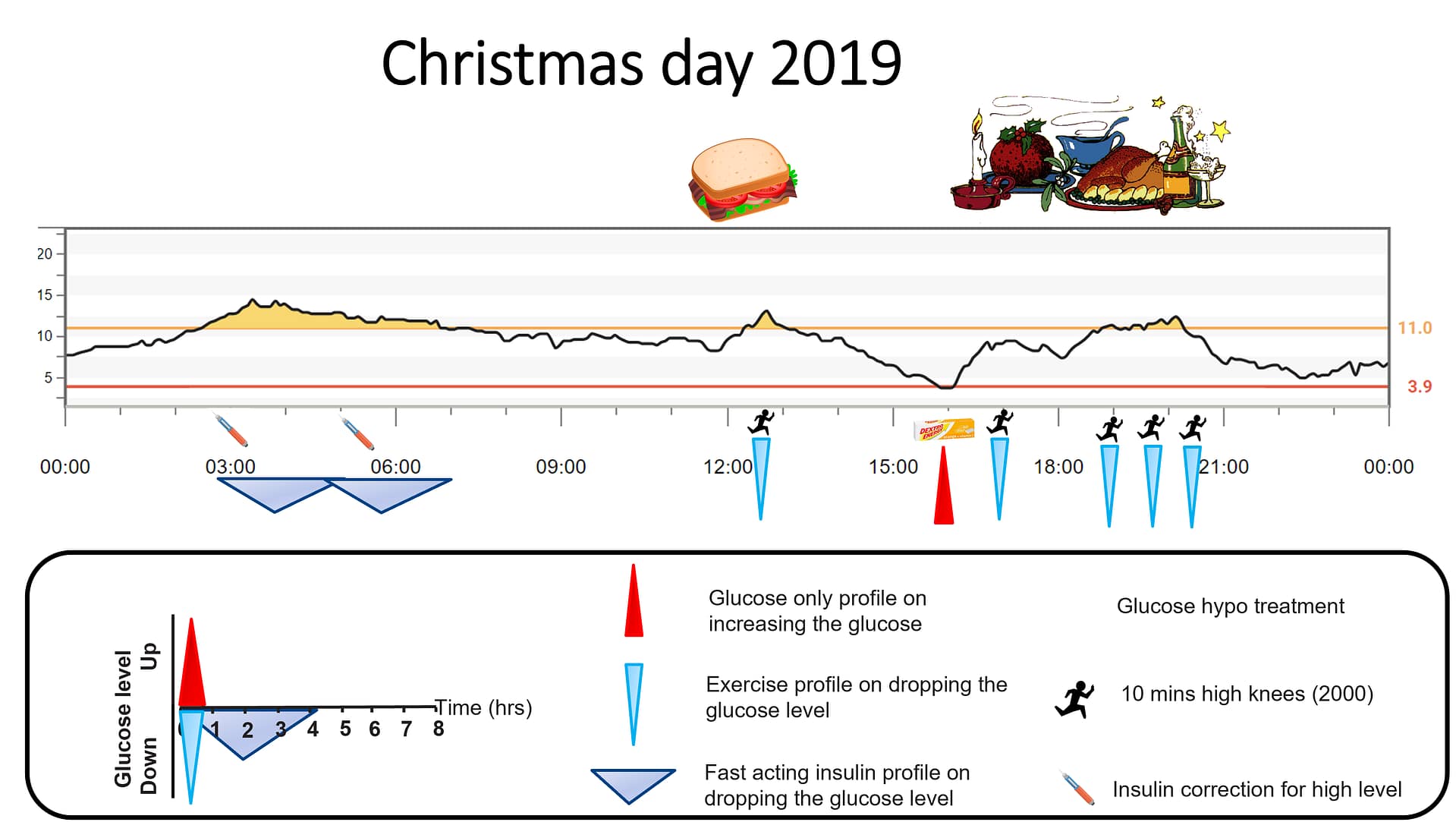
And after switching to Dynamic Glucose Management, many people stop needing double treatments.
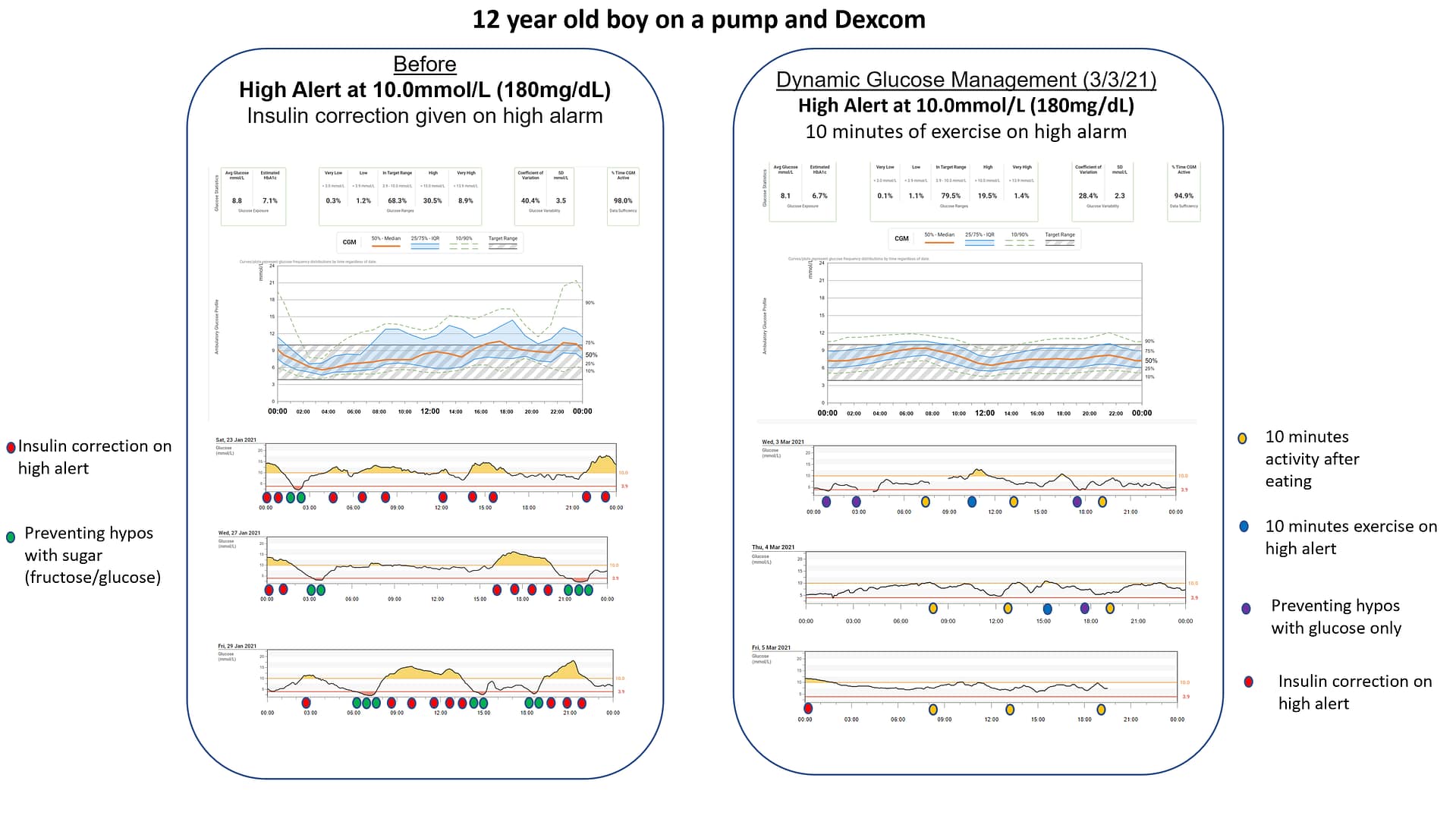
Ready to take preventing lows to the next level?
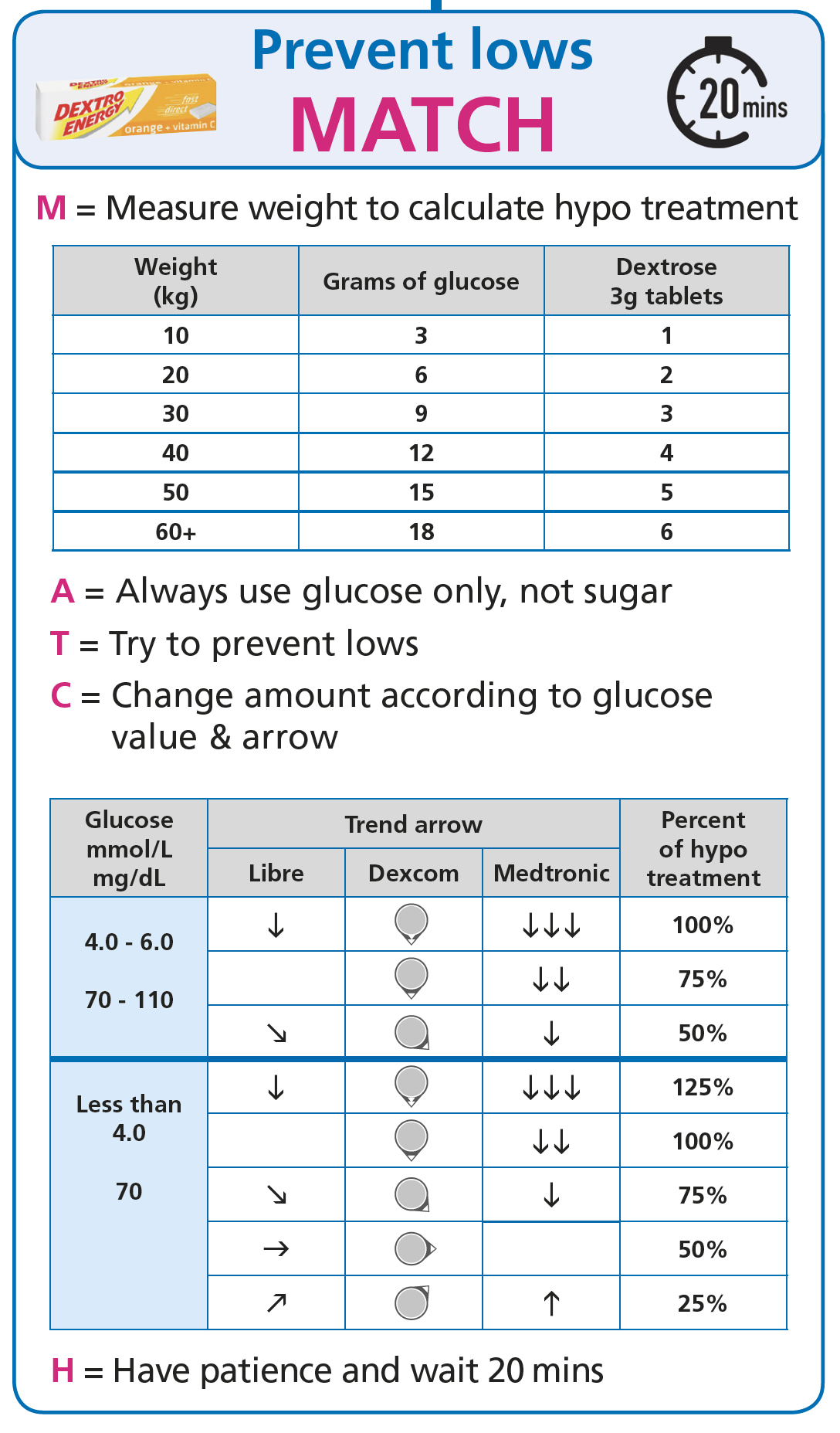
What’s new about MATCH?
The new move is adjusting your glucose dose based on where you are and how fast you’re falling.
Not all hypos are the same, so they don’t deserve identical treatment.
If you’re dropping fast, you need more glucose. If you’re drifting down slowly, less will do the job.
Here’s how it works in practice. A heavier adult might have a “full treatment” around 18 g (for example, six dextrose tablets). If glucose is 5.5 mmol/L (100 mg/dL) and just falling, they might take ~50%. If they’re at the same level but falling rapidly, they might take the full amount.
A smaller child might have a “full treatment” around 6 g (for example, two tablets). If they’re at 3.5 mmol/L (65 mg/dL) and just falling, they might take ~75%. If they’re at the same level but falling rapidly, they might take ~125%.
This graphic pulls MATCH together:

Then do the hardest bit: wait 20 minutes before deciding on a second treatment. That’s the time it takes for glucose to absorb and register on CGM.
Will this work perfectly every time?
No.
This table is a solid guide for most people most of the time, but type 1 diabetes is highly individual and every hypo has a backstory. For example:
- How much bolus insulin is still circulating
- What activity/exercise you’ve done in the past 3 hours
- Heat and humidity
- How many hypos you’ve had in the last 24 hours
- And about 97 other annoying variables
So you’ll still learn on the job, guided by one rule:
What’s next
Next step: Infographic.

